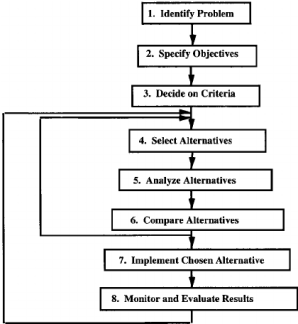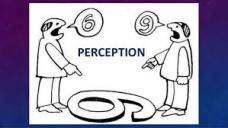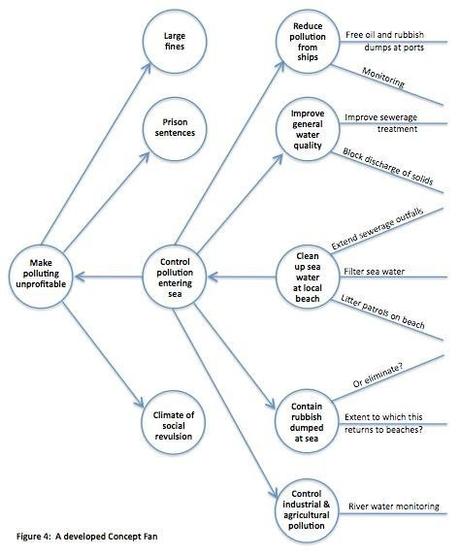Policy analysis and policy design
Classical rational policy analysis and interactive policymaking are basically reactive concepts.
An innovative policy can only come about if policymakers redefine themselves as designers instead of problem solvers. This approach will we show in the next post.
But first, classical policy analysis can be enriched by using some creative thinking tools.
The classical policy analysis
The classical rational policy analysis has many variants, but overall they all come down to systematically going through the following phases:

- problem orientation
- problem definition
- formulate the objective
- drawing up assessment criteria
- generation of alternatives
- choice of the best alternative
- evaluation of the result
The strength of the traditional policy analysis is the phased approach, which prevents from jumping from problem to solution., with too little thought or intuitively. Another strong point is that all participants know at all times what kind of thinking effort is required of them.
A weak point is that, despite the careful, logical approach, you will arrive at a compelling solution but within a certain cause-effect model.
There are often queues for the elevator in an office building. The problem orientation of the Head of Technical Services will mainly include technical aspects, such as the capacity of the lift, the ascent and descent speed, the number of requested lift movements per unit of time, average waiting times, etc. Using the waiting time theory he or she will be able to determine exactly that the lift capacity needs to be expanded by 1, 5 lift to get acceptable waiting times. After some architectural analysis, the costs are estimated at no more than 1 million euros.
The problem definition by the business psychologist will include other aspects. Such as the behavior of the people in the line, why they don’t take the stairs, what people do worry about and what types of people they are. The problem is that the people in the queue are bored, an important theme in psychology. The psychologist proposes to hang a mirror so that people can see each other unnoticed so that they do not get bored. The cost of a mirror is 100 euros.

No matter how carefully the ratio is used, the perception of the situation precedes logical reasoning.
A policymaker at Economic Affairs will soon interpret the weak position of immigrants on the labor market in economic terms: there is apparently a lack of demand for labor. A policy-maker at the Education Department will perceive the same situation as an educational problem: a language deficit. And a Social Affairs policy officer will be inclined to define the problem as a case of pure discrimination.
The careful completion of the phases from classical policy analysis always takes place within a certain perception or pattern of thinking.
Articulation of the situation: a checklist
It is therefore important, especially in the problem orientation phase, to develop sensitivity to existing thinking about the problematic situation. Articulating the following checkpoints can help you with this:
- Assumptions: what do we assume here? Based on what experience or behaviour? What narrows the range of possible solutions? What do we always do the same way? Which strategies are constantly being repeated? Is there more of the same? What do we implicitly assume? What do we assume for what?
- Restrictions: what limits do we encounter? Are they really needed? Which implicit preconditions (feasibility, costs) are introduced? From where does our thinking start?
- Dominant ideas: what are the ideas that dominate the thinking? What is the underlying policy model? Are there underlying concepts? Are there alternatives?
- Essential factors: what is considered essential for the solution here? What can certainly not be left out? Why not?
- Avoidance factors: what are we trying to avoid. Or what do we certainly not want? When will it get worse? What function does maintaining the problem have?
- Either/or thinking: is the problem or solution set in mutually exclusive terms? Are there more ways to look at the situation? Are redefinitions possible? Could we bridge the polarities, design a and/and solution??
Once you have made the checkpoints explicit, you can also escape it.
Enhanced policy analysis
With the help of the injection of creative techniques, you can enrich the classical policy analysis. In problem orientation, you can use the method of the Six Thinking Hats in addition to the checklist above. You can apply the Focus technique in the problem definition phase. A Concept Fan is a good tool when formulating objectives.

When formulating alternatives you can set up Provocative Operations. A PMI will be able to help you formulate criteria. You then tackle the final choice again with an extensive Thinking Hat Session. Finally, the evaluation of the effects. This can usually use some Provocations.
Interactive policymaking
Interactive policy-making is an innovative variant of traditional policy analysis. The effect of the concept is that stakeholders are involved in policy-making at every stage. The objective is to bring more perspectives, knowledge and experience into the policy process. This also increases support for the policy.

The value of interactive policy-making is that the number of interactions with people who are outside the pattern of the official policymakers is increased. This reduces the chance that policymakers will become entangled in a pattern of mutual agreements built up over the years on how to interpret reality. In the post Language is not Innocent – How Thinking Patterns are Created, we discussed how agreements about the reality are made in interactions but are then routinely dragged in and frozen. As a result, they are no longer open to discussion and reflection. After which reactive action is introduced. The introduction of others can provide an opening here, provided the rules allow this.
However, it is a misunderstanding to assume that better policy will be achieved if all parties are brought together. That will easily amount to substantiating already adopted positions, or thinking and fleeing into immediate solutions that are acceptable to the parties. Designing better solutions than the existing ones is usually not required. There is a great temptation for the accompanying civil servant to guide the discussion in “good” ways through some manipulative conversation techniques.
With the help of Six Thinking Hats, interactive policymaking will be considerably more efficient and effective, as with any thought sessions.
An issue submitted for solution

At the heart of classical policy analysis is a question submitted for a solution, which requires a lengthy and difficult investigation. That research requires the analysis of the issue into components, for further consideration. It is no different in this respect from rational problem analysis known in the industry or the method of technical troubleshooting by car mechanics. Technical troubleshooting assumes that if the cause is found, an effective solution will be revealed automatically. Policy analysts think alike, but unjustified.
In the next post, we will contrast the concept of design with the concept of rational policy analysis.
Advertisements